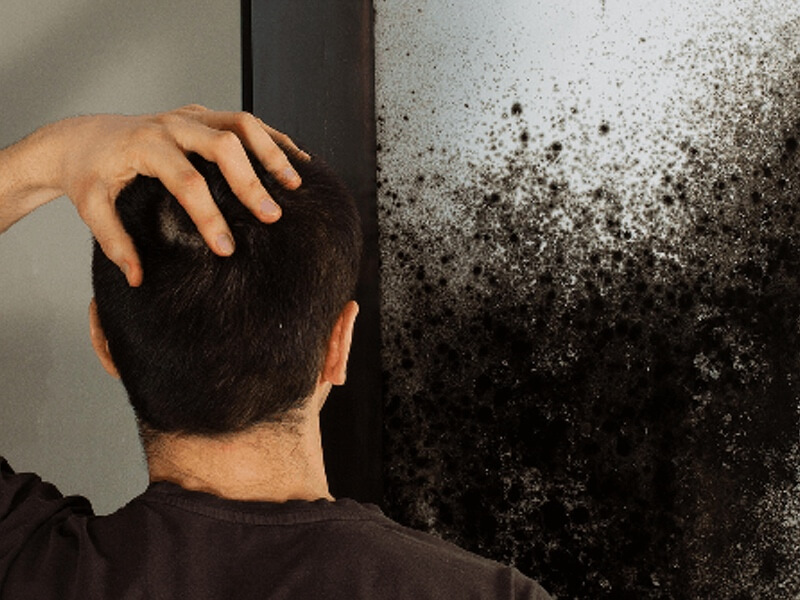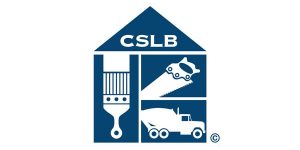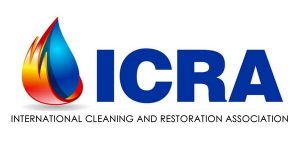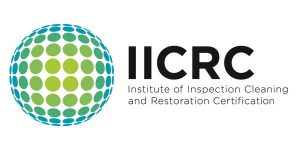You’ve probably been hearing more and more about mold problems. That’s not some fad or industry promoting itself; there are two very good reasons behind it. First, medical experts have come to realize that mold contributes to or causes many more health issues than previously thought. Second, recently constructed buildings are more energy-efficient. As part of that, they’re “tighter” with far less outside air coming in through door and window seals as well as other construction details. That makes it more likely for excess indoor humidity to build up, and that’s all mold really needs to grow.
It’s quite reasonable for you to take care of small outbreaks yourself, but you need to learn the right way of doing that and understand when calling in a professional is necessary. But first, let’s understand a little about mold itself.

About Mold
Mold is a particular type of fungus that grows in long multicelled filaments. It’s that fuzzy stuff you see on stale bread and other foods. And sometimes on your walls and ceilings. There are about 1,000 different species common in the United States and some 100,000 worldwide. Mold growth doesn’t need any light. It simply feeds off of dissolved nutrients. Many building materials such as plywood, paneling, drywall, and wood framing are great food sources as are fabric, paper, carpeting, and carpet padding. So it really only really needs a bit of moisture to get going, and that can happen in total darkness.
How it Spreads
Mold reproduces through thousands and even millions of tiny spores. Invisibly tiny they travel on the smallest of air currents. They’re common just about everywhere outdoors and easily make their way indoors to just about any location imaginable. Spores are highly resilient. They can survive all sorts of drying and other conditions while they wait for the right conditions to start growing.
A colony can flourish in as little as 24 hours after moisture becomes present. Or it may take one to two weeks to really get going. Although temperatures from 77 to 86 deg F are ideal for most species, mold growth can occur at anywhere from 40 to 100 deg. F. That’s pretty much year-round in Orange County and most of Southern California. Besides moisture problems in the bath, since water vapor can condense inside walls, crawl spaces, and other building cavities you could have a major outbreak completely hidden from view.
Mold Problems
Those fuzzy blotches are ugly, and are usually accompanied by a musty smell. Mold also gradually damages building materials and if it goes on long enough can even lead to structural damage. But its impact on human health (as well as that of pets) is its biggest hazard. All species release allergens and irritants that can lead to a runny nose, sinus congestion, headaches, eye/nose/skin irritations, coughing or breathing problems. Often mere annoyances such symptoms shouldn’t be ignored as they can lead to respiratory infections and breathing problems, especially among seniors and children.
You’ve probably heard about infamous black mold creating toxic conditions and even rendering buildings uninhabitable. But not all black molds are toxic, and certain species of other colors also release mycotoxins that with prolonged exposure can lead to problems as serious as life-threatening and permanent organ damage.
Mold Testing
If you suspect you have a mold problem but can’t spot anything obvious, or if you’ve had any degree of water damage, calling a professional company for an inspection is a good idea. They’ll perform a detailed visual evaluation that should include lifting carpet and perhaps wall paper, moving furniture, and having a look inside air ducts. They may also use infrared cameras or moisture meters to check for damp spots. They may even drill a small and easily patched hole in the wall to use a borescope to look inside.
Many experts advise that if an outbreak is found there’s no need for mold testing. Simply proceed with mold removal, following all the precautions you would if you knew that a toxic species was present. If there’s odors or health concerns with no visible signs, then taking samples and lab testing them is the next step in mold remediation. There are several types of samples: air (via filters), bulk materials, surface, and swabbing. No single one covers everything so a pair of samples are usually taken. Test results will indicate things such as the species found and a count of mold spores in the sample. Surprisingly, there’s no federal standards for acceptable levels.
Mold testing is actually more common after mold abatement work in order to test that removal was successful and levels aren’t in excess of those outdoors.
Next Time
In our next post we’ll talk about the mold removal process itself as well as how to prevent its growth in the first place. Until then, here’s a great reference to learn more about the basics: https://www.epa.gov/mold/ten-things-you-should-know-about-mold.









